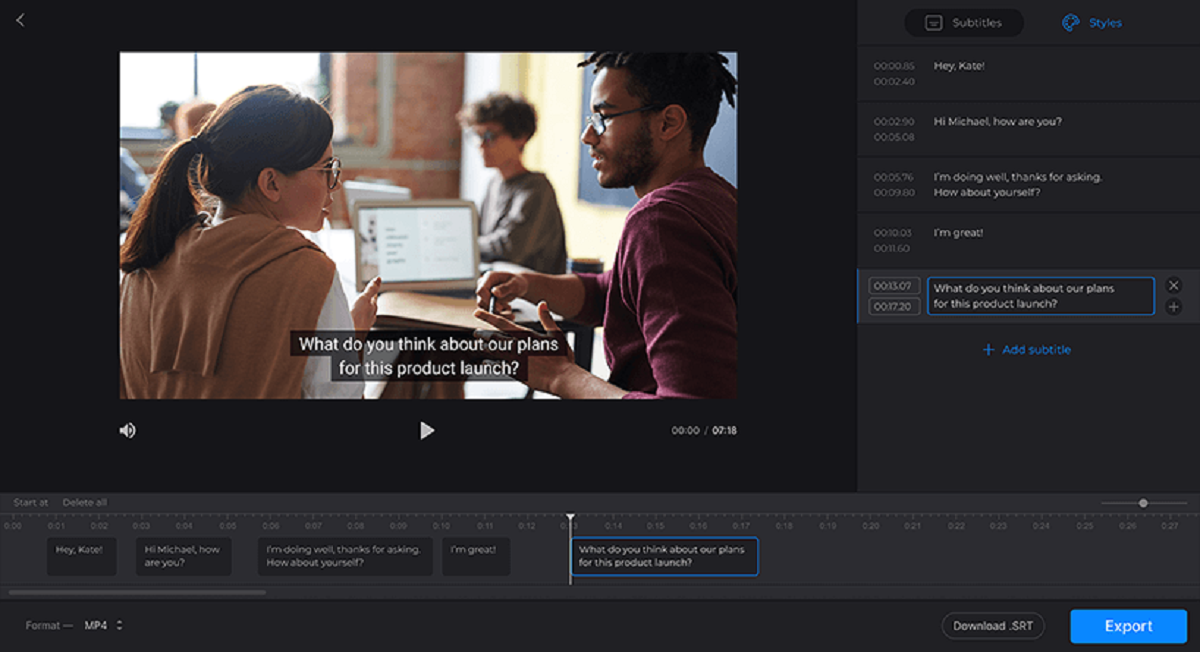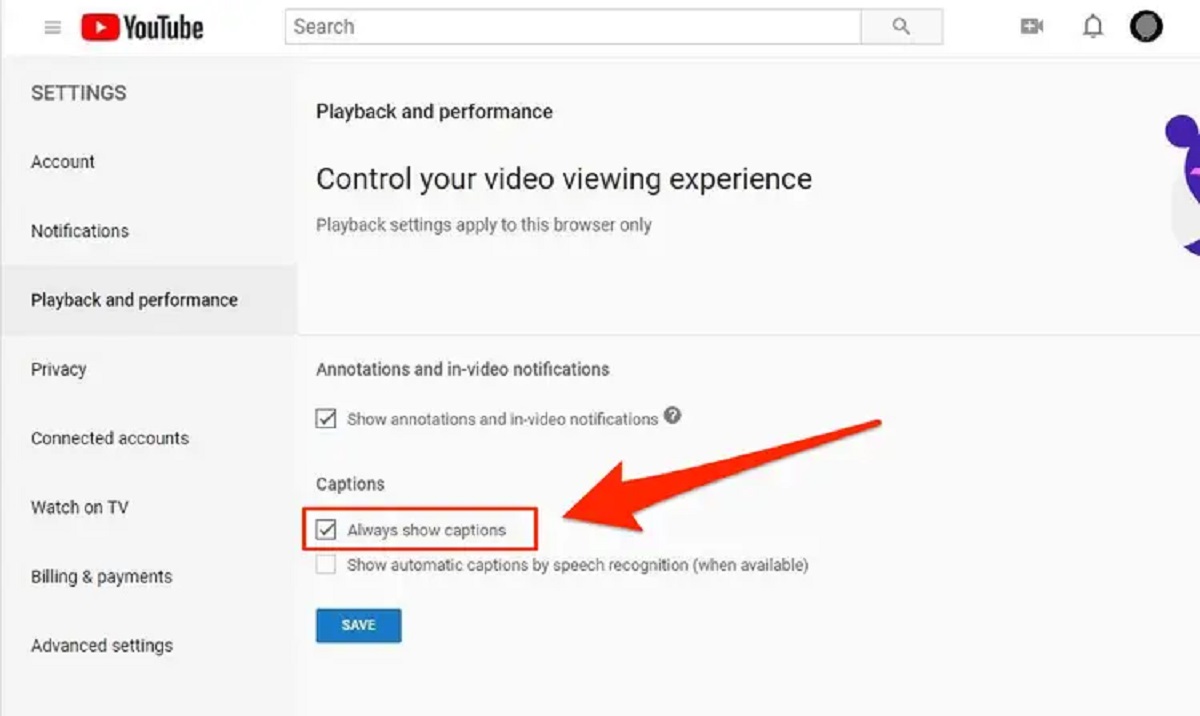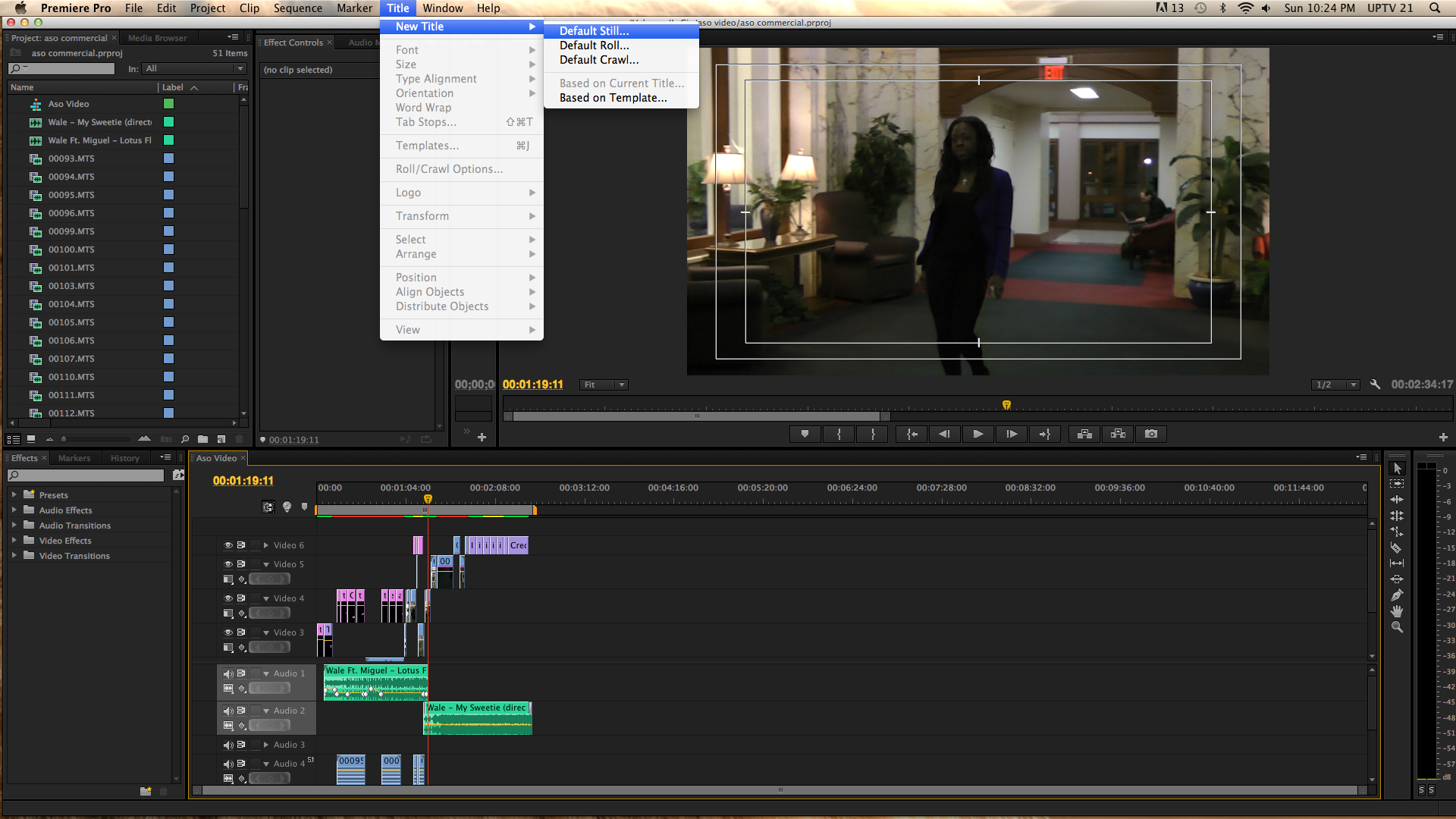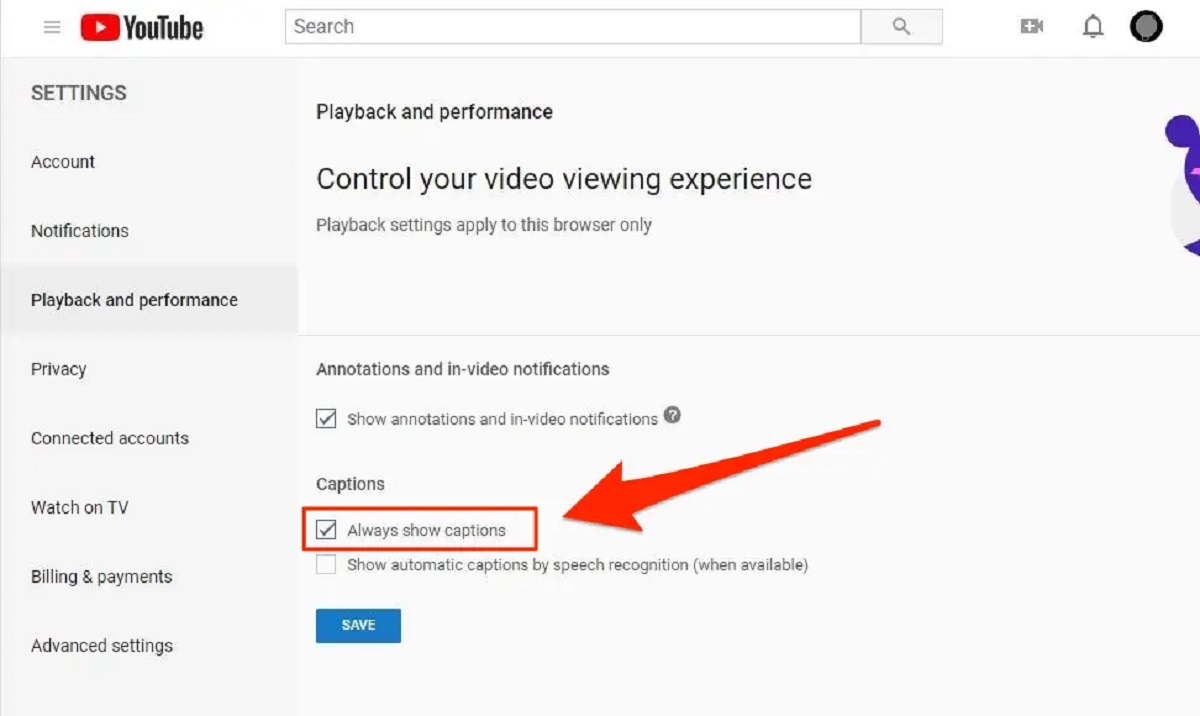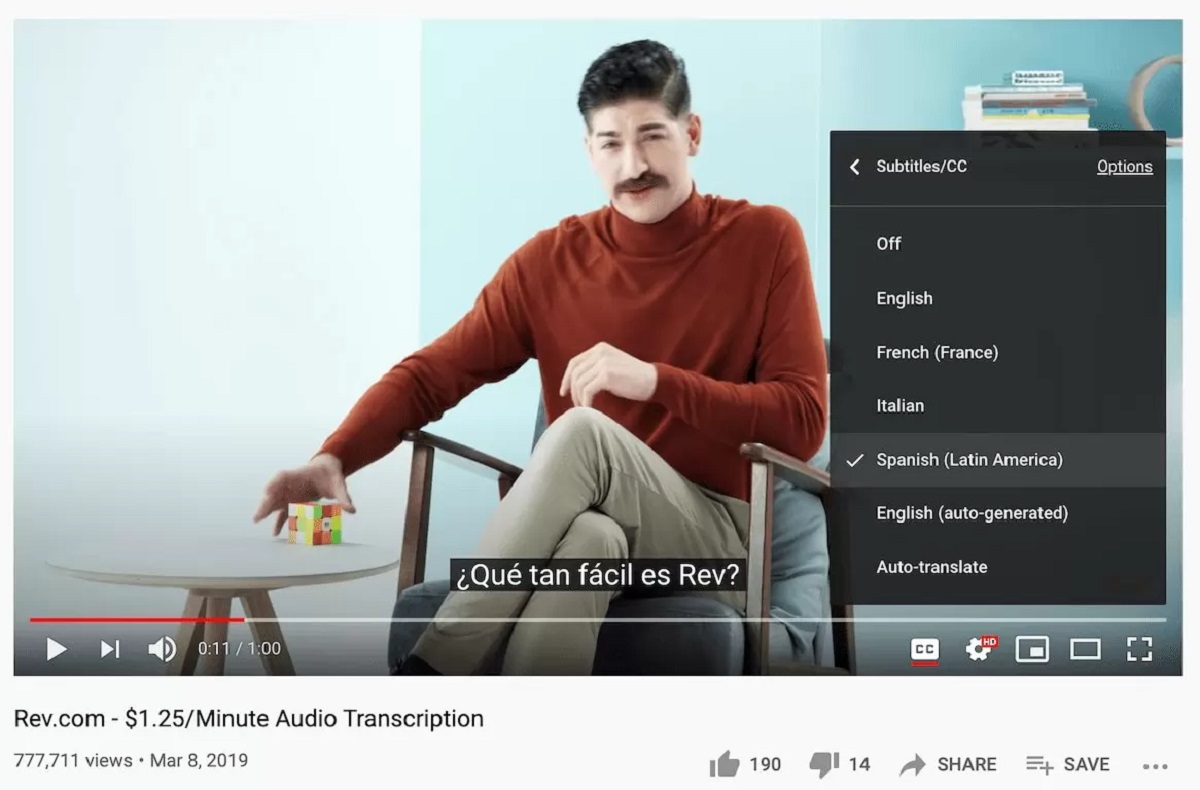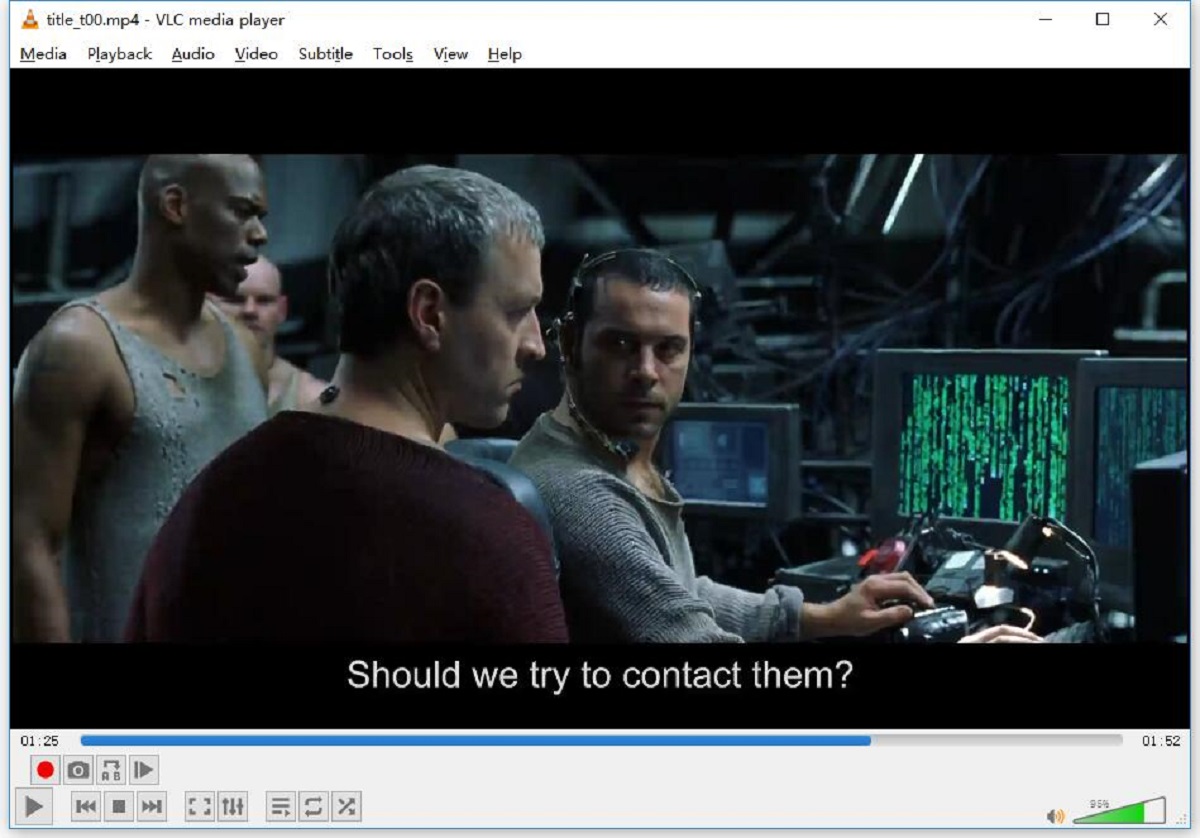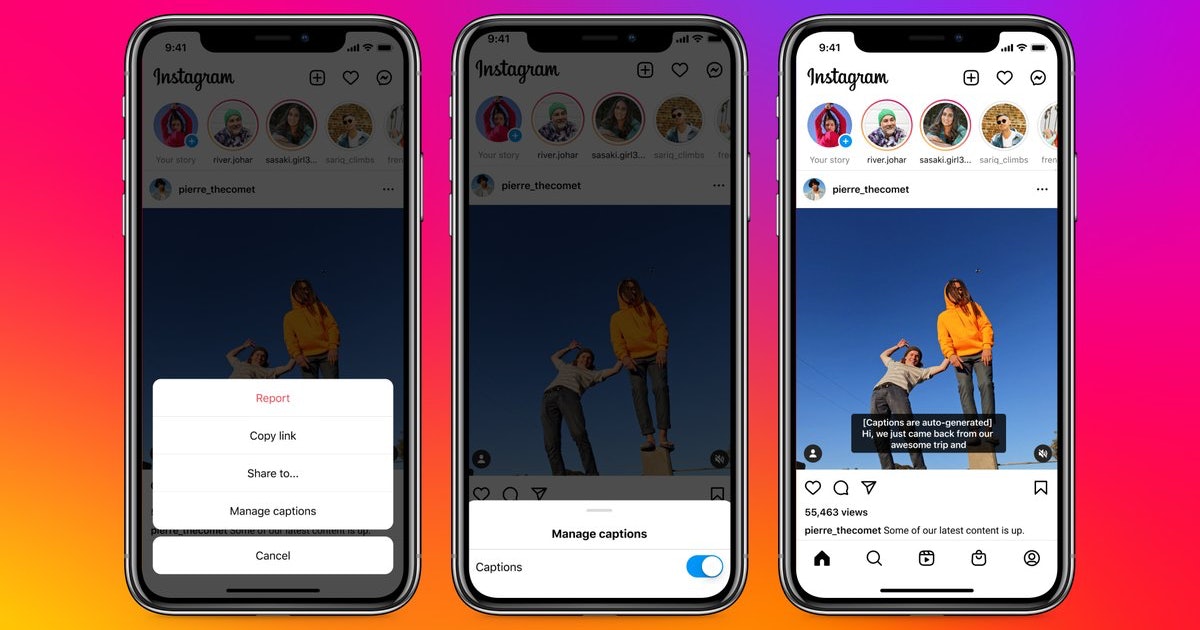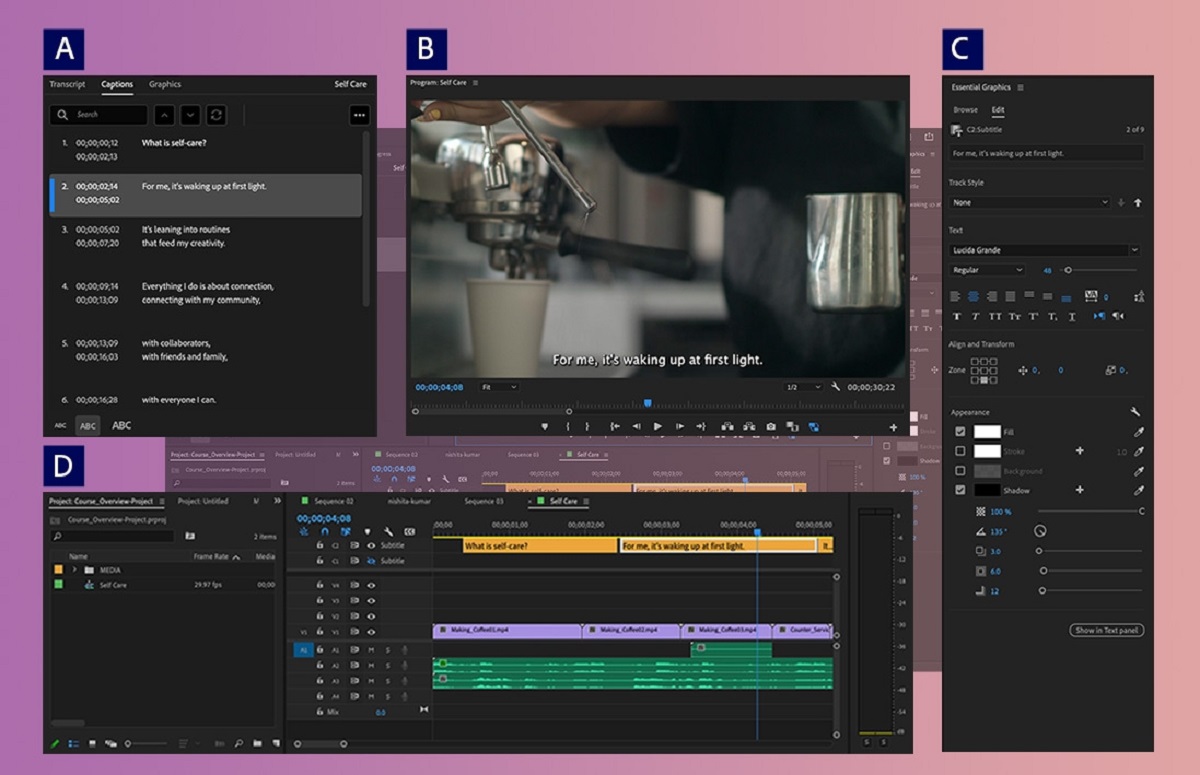Introduction
In today’s digital age, video content has become increasingly popular and prevalent across various platforms. Whether it’s educational videos, marketing ads, or entertainment content, videos have the power to captivate and engage audiences. However, not everyone can fully understand or appreciate the content due to language barriers or hearing impairments. This is where subtitles come in, providing a valuable solution to make videos accessible and inclusive.
Subtitles are text overlays that appear on screen, displaying the dialogue or narration of the video. Traditionally, creating subtitles has been a time-consuming and labor-intensive process, requiring manual transcription and synchronization. However, thanks to advancements in technology, automatic subtitle generation has emerged as an efficient and convenient method for adding subtitles to videos.
Automatic subtitles, also known as closed captions, are created using speech recognition algorithms that automatically transcribe the audio into text. This eliminates the need for manual transcription and significantly reduces the time and effort required to create subtitles. With just a few clicks, video creators can generate accurate subtitles that enhance the accessibility and reach of their content.
By incorporating automatic subtitles into your videos, you can unlock a multitude of benefits. Firstly, automatic subtitles maximize the audience reach by catering to viewers who may have difficulty understanding the spoken language or who are watching videos in noisy environments. Additionally, they improve search engine optimization (SEO) by providing searchable text content, expanding the discoverability of your videos.
Moreover, automatic subtitles promote inclusion and accessibility for individuals with hearing impairments. By offering text-based captions, you ensure that everyone can fully grasp the content and engage with your videos, fostering a more inclusive viewing experience. Automatic subtitles can also enhance the user experience by allowing viewers to mute the audio without losing comprehension.
In this guide, we will delve deeper into the world of automatic subtitles for videos. We will explore how automatic subtitles work, the benefits they offer, and the various challenges and best practices associated with their implementation. Whether you are a content creator, marketer, or simply interested in video accessibility, this guide will equip you with the knowledge and tools to create professional and engaging subtitles for your videos.
Benefits of Automatic Subtitles for Video
Automatic subtitles for videos offer numerous advantages that can enhance the overall viewing experience and expand the accessibility of your content. Let’s explore some of the key benefits:
- Improved Accessibility: Automatic subtitles ensure that your videos are accessible to a wider audience, including individuals with hearing impairments or those who are non-native speakers of the video’s language. By providing text-based captions, you create an inclusive viewing experience that accommodates diverse audiences.
- Enhanced SEO: Videos with automatic subtitles have an advantage in search engine optimization. The text content within the subtitles is indexed by search engines, making your videos more discoverable. This can lead to increased visibility and higher rankings in search results, ultimately driving more organic traffic to your videos.
- Increased Viewership: Automatic subtitles can attract more viewers to your videos. People who prefer to watch videos without sound or are in noisy environments can still enjoy and understand the content. By catering to these viewers, you expand your potential audience and increase the likelihood of engagement and sharing.
- Enhanced User Experience: Automatic subtitles provide a convenient user experience by allowing viewers to customize their video-watching experience. They can easily toggle the subtitles on or off, adjust the font size or style, or even translate the subtitles into their preferred language. This flexibility empowers viewers to consume your content in a way that best suits their needs.
- Improved Comprehension: Videos with automatic subtitles often lead to better comprehension and retention of information. Textual reinforcement of the audio content helps viewers absorb the message more effectively, especially for complex or technical subjects. This can result in higher engagement, longer watch times, and greater overall viewer satisfaction.
- Compliance with Legal Requirements: Depending on your jurisdiction or the nature of your content, providing subtitles may be a legal requirement. Automatic subtitles ensure that you meet accessibility standards and comply with relevant regulations, preventing any legal complications that may arise from inaccessible videos.
By leveraging the benefits of automatic subtitles, you can create videos that are accessible, engaging, and appealing to a broader audience. Whether you’re producing educational content, marketing videos, or entertainment media, automatic subtitles offer a valuable tool for improving the reach and impact of your video content.
How Automatic Subtitles for Video Work
Automatic subtitles for videos are generated using advanced speech recognition technology and algorithms. The process involves transcribing the audio content of the video into text, synchronizing it with the corresponding timestamps, and displaying it as subtitles on the screen. Here’s a breakdown of how automatic subtitles work:
- Audio Analysis: The first step in the automatic subtitle generation process is analyzing the audio of the video. Speech recognition algorithms extract the audio signals and convert them into digital format.
- Speech Recognition: The next step involves using sophisticated speech recognition algorithms to convert the spoken words into text. These algorithms analyze the audio signals, identify individual words, and generate the corresponding text output.
- Language Modeling: To improve the accuracy of the generated subtitles, language modeling techniques are utilized. These models refer to vast databases of language patterns, words, and phrases to enhance the precision of the transcribed text. Language models help the algorithms make predictions and correct errors during the transcription process.
- Text Synchronization: Once the audio is transcribed into text, the algorithm matches the text with the respective timestamps. This ensures that each subtitle appears on the screen at the correct moment, synchronized with the video’s audio and visual content.
- Subtitle Presentation: After the text is synchronized with the timestamps, the generated subtitles are presented visually on the screen. Subtitle styles, such as font, size, color, and position, can often be customized to suit the viewer’s preferences or the video’s branding.
It’s important to note that while automatic subtitles offer convenience and efficiency, there may be some limitations. Certain factors can impact the accuracy of the generated subtitles, such as background noise, accents, and speech clarity. Additionally, the performance of speech recognition algorithms may vary depending on the language being transcribed. However, advancements in technology and machine learning continue to improve the accuracy and reliability of automatic subtitle generation.
In summary, automatic subtitles for videos leverage speech recognition technology to transcribe and synchronize the audio content into textual subtitles. This automated process saves time and effort compared to traditional manual transcription methods, making it an effective solution for enhancing accessibility, increasing viewership, and optimizing the overall viewing experience of your videos.
Choosing the Right Automatic Subtitling Tool
When it comes to incorporating automatic subtitles into your videos, choosing the right tool is crucial for achieving accurate and high-quality results. With the abundance of options available, it’s important to consider several factors before making a decision. Here are some key considerations when selecting an automatic subtitling tool:
- Accuracy: The foremost criterion to evaluate is the accuracy of the automatic subtitling tool. Look for a tool that utilizes advanced speech recognition algorithms and language modeling techniques to ensure precise transcription of the audio content. Testing the tool with a sample video or reading user reviews can provide insights into its accuracy.
- Languages Supported: Consider the languages the tool supports for automatic subtitle generation. Ensure that the tool can accurately transcribe and display subtitles in the languages you require for your videos. Some tools may excel in transcribing certain languages while struggling with others, so it’s important to verify language capabilities.
- Customization Options: Check if the subtitling tool allows for customization of subtitle styles, such as font, size, color, and positioning. This ensures that the subtitles are visually appealing and aligned with your brand’s aesthetics. Customization options also extend to the ability to add captions for sound effects, speaker identification, and editing capabilities.
- Integration: Consider the tool’s compatibility with your video editing or publishing platforms. Look for seamless integration options that allow you to easily import and export subtitle files. Integration with popular video platforms like YouTube, Vimeo, or social media platforms can streamline the workflow and save you time.
- Ease of Use: A user-friendly interface and intuitive workflows can significantly enhance the subtitling process. Look for a tool that offers a straightforward and easy-to-navigate interface, allowing you to effortlessly generate and fine-tune the subtitles for your videos. Video previews, keyboard shortcuts, and real-time updates can further streamline the subtitling process.
- Cost and Accessibility: Evaluate the cost structure of the automatic subtitling tool. Some tools offer free or freemium versions with limitations, while others require a subscription or one-time payment. Consider your budget and the frequency of your subtitling needs. Additionally, accessibility features like support for closed captions for the hearing impaired should be considered for compliance with accessibility guidelines.
By carefully assessing these factors, you can make an informed decision and select an automatic subtitling tool that best meets your requirements. It’s advisable to test different tools, read user reviews, and explore demo versions before committing to a specific tool. Remember that choosing the right tool will not only enhance the accuracy and quality of your subtitles but also streamline your subtitling workflow, saving you time and effort in the long run.
Step-by-Step Guide to Creating Subtitles Automatically
Creating subtitles for your videos automatically can be a straightforward process when you follow the right steps. Here is a helpful step-by-step guide to assist you in generating subtitles using an automatic subtitling tool:
- Choose an Automatic Subtitling Tool: Research and select a reliable automatic subtitling tool that suits your needs. Consider factors such as accuracy, language support, customization options, and integration capabilities.
- Prepare Your Video File: Ensure that your video file is in a format compatible with the subtitling tool. If necessary, convert or optimize the video file to a suitable format or resolution to avoid any compatibility issues.
- Import Your Video File: Open the automatic subtitling tool and import your video file into the software. Most tools have a straightforward and user-friendly interface that allows you to easily import your video with a few clicks.
- Adjust Audio Settings: Check the audio settings in the subtitling tool to ensure optimal audio quality. Adjust the volume level or apply any necessary audio enhancements to enhance the accuracy of the automatic speech recognition process.
- Configure Language and Subtitle Settings: Set the language for automatic transcription. Choose the language that matches the audio content of your video. Additionally, specify the style and formatting preferences for your subtitles, such as font, size, color, and positioning.
- Run Automatic Subtitling Process: Initiate the automatic subtitle generation process within the subtitling tool. The tool will utilize speech recognition algorithms to transcribe the audio content and synchronize it with the video’s timestamps.
- Review and Edit Subtitles: After the automatic subtitling process is complete, review the generated subtitles. Check for any errors, misspellings, or inaccuracies, and make any necessary edits to ensure the subtitles are accurate and aligned with the video’s content.
- Preview Subtitles: Utilize the preview feature in the subtitling tool to see how the subtitles look in the context of the video. This step allows you to assess the timing, readability, and overall visual appeal of the subtitles.
- Export Subtitles: Once you are satisfied with the accuracy and presentation of the subtitles, export them from the subtitling tool. Choose a suitable format, such as SRT, VTT, or SSA, depending on your video platform’s requirements or preferences.
- Embed Subtitles into Your Video: Finally, incorporate the exported subtitle file into your video. This typically involves uploading the file to the video editing software or online platform you are using. Ensure that the subtitles are synchronized correctly with the video and appear at the appropriate timestamps.
Following these steps will enable you to generate automatic subtitles for your videos efficiently and effectively. Remember to periodically update your subtitling tool and stay up to date with the latest advancements in automatic speech recognition technology for even better results.
Tips for Working with Automatic Subtitles
Working with automatic subtitles can greatly streamline the process of adding captions to your videos. However, it’s important to keep in mind a few tips and best practices to ensure the accuracy and quality of your subtitles. Here are some valuable tips to help you effectively work with automatic subtitles:
- Proofread and Edit: Although automatic subtitling tools are highly advanced, errors can still occur. Always take the time to proofread and edit the generated subtitles before finalizing them. Pay attention to spelling, grammar, and punctuation to ensure accurate and fluent captions.
- Review Timing: Automatic subtitles may not always perfectly align with the audio and video content. Carefully review and adjust the timing of the subtitles to ensure they appear and disappear at the right moments. This ensures a seamless and synchronized viewing experience for your audience.
- Check for Accuracy: While automatic subtitling tools are impressive, they may struggle with accurately transcribing certain accents, dialects, or technical terms. Verify the accuracy of the generated subtitles, especially for specialized or niche content. Manually edit any inaccuracies to maintain the integrity of the captions.
- Consider Localization: If your videos are targeting an international audience, it’s important to consider localization. Automatic subtitling tools often provide options to translate subtitles into different languages. Take advantage of these features to broaden your reach and engage viewers from different regions.
- Ensure Readability: Optimize the readability of the subtitles by choosing appropriate font styles, sizes, and colors. Ensure a good contrast between the subtitle text and the background to make them easily visible to viewers. Consider the video’s content, context, and your target audience when customizing the subtitle appearance.
- Proofwatch: It’s important to not only proofread your subtitles but also watch them in action. Play the video with the subtitles enabled to see how they interact with the visuals and to identify any potential issues or discrepancies. This step ensures that the subtitles enhance the viewing experience and do not overshadow important on-screen elements.
- Test Accessibility: Check the accessibility of your automatic subtitles by ensuring they meet the requirements for closed captions. Ensure that the subtitle text is easily readable by viewers with visual impairments or those watching in noisy environments. Test the compatibility of the subtitles with assistive technology and screen readers to ensure accessibility compliance.
- Provide Feedback to the Tool Provider: If you notice recurring inaccuracies or shortcomings in the automatic subtitling tool you are using, consider providing feedback to the tool provider. This helps them identify areas for improvement and enhances the tool’s performance for future users.
By implementing these tips, you can maximize the effectiveness and quality of your automatic subtitles. Remember that while the subtitling process can be automated, your attention to detail and manual adjustments are crucial to ensure optimal results. Providing accurate and well-crafted captions enhances the overall viewing experience of your videos and promotes inclusivity for a wider audience.
Common Challenges and How to Overcome Them
While automatic subtitles offer convenience and efficiency, there are some common challenges that you may encounter during the subtitling process. Being aware of these challenges and knowing how to overcome them will help you create high-quality subtitles. Here are some common challenges and their solutions:
- Accent and Dialect Recognition: Automatic subtitling tools may struggle with accurately transcribing accents or dialects that differ from the tool’s trained models. To overcome this, consider using a tool that supports language variants or manually edit the transcription to correct any inaccuracies.
- Noise and Background Disturbances: Background noise or disturbances in the audio can affect the accuracy of automatic transcription. To mitigate this, ensure that the audio is recorded in a controlled environment with minimal background noise. If necessary, use audio editing techniques or noise reduction software to improve the audio quality before subtitling.
- Homonyms and Ambiguous Speech: Homonyms or similarly pronounced words can cause confusion for automatic speech recognition algorithms. To address this issue, context is key. Review the subtitles to identify any ambiguous speech and make necessary corrections based on the video’s visuals and overall context.
- Speaker Identification: If there are multiple speakers in your video, automatic subtitling tools may struggle to distinguish between them. Consider manually labeling or identifying speakers during the editing process to improve the accuracy of the subtitles.
- Technical Jargon and Specialized Vocabulary: Automatic subtitling tools may have difficulty accurately transcribing technical terms or specialized vocabulary. To overcome this challenge, manually edit the subtitles to insert the correct terms. You can also consider creating a customized vocabulary or using a tool that allows you to add specific terms to its language model.
- Synchronization Issues: Automatic subtitles may not always be perfectly synchronized with the audio and video. Review the subtitles carefully and adjust their timing as needed to ensure that they appear and disappear at the correct moments. This step helps maintain a seamless viewing experience for your audience.
- Formatting Inconsistencies: Automatic subtitling tools may not always adhere to your desired formatting preferences, such as font size, color, or style. Check the exported subtitle file and make necessary adjustments to match the formatting guidelines you have set for your subtitles.
By being mindful of these common challenges and applying the suggested solutions, you can overcome obstacles and ensure the accuracy and quality of your automatic subtitles. Regularly reviewing and editing the generated subtitles is key to creating professional and error-free captions that enhance the accessibility and viewer experience of your videos.
Best Practices for Automatic Subtitling
To maximize the effectiveness and quality of your automatic subtitles, it is important to follow best practices throughout the subtitling process. These practices will help ensure accurate and well-presented captions. Here are some best practices to consider:
- Choose High-Quality Audio: Automatic subtitling tools perform best with clear and high-quality audio. Ensure that the audio in your videos is recorded with good equipment and minimal background noise to improve the accuracy of the transcription.
- Review and Edit Subtitles: While automatic subtitling is a time-saving process, it is essential to review and edit the generated subtitles for accuracy. Take the time to proofread and correct any spelling, grammar, or transcription errors to maintain the integrity of the captions.
- Ensure Synchronization: Pay close attention to the synchronization of the subtitles with the audio and visuals. Adjust the timing if necessary to ensure that the subtitles appear and disappear at the right moments, maintaining a seamless and synchronized viewing experience.
- Use Punctuation: Adding appropriate punctuation to your subtitles enhances readability and comprehension. Place commas, periods, question marks, and exclamation marks where needed to convey the correct meaning of the dialogue or narration.
- Break Long Sentences: Long sentences can be challenging to read and follow. Break them into shorter, more easily digestible phrases to improve readability and ensure that viewers can comfortably read the subtitles without them rushing by too quickly.
- Capture Tone and Emotion: Try to convey the tone and emotion of the speech through the subtitles. Use punctuation, capitalization, or specific language cues to indicate emphasis, excitement, or other emotional nuances in the dialogue.
- Consider Viewer Preferences: Take into account the preferences of your viewers when it comes to subtitle customization. Provide options for adjusting font size, color, and style to accommodate individual preferences and ensure a personalized viewing experience.
- Ensure Subtitle Legibility: Choose a font style, size, and color that are easily readable on screens of different sizes. Use a contrasting color between the subtitles and the background to ensure clear visibility, especially for viewers with visual impairments.
- Proofwatch the Subtitles: Test the subtitles by watching the video with the subtitles enabled. This step allows you to identify any timing or readability issues and make necessary adjustments to provide an optimal viewing experience.
- Update Subtitles when Needed: If changes occur in the video, such as edited dialogue or modified visuals, make sure to update the subtitles accordingly to maintain accuracy and coherence with the content.
Following these best practices will help you create accurate, professional, and visually appealing automatic subtitles. Strive to continuously improve your subtitling process by analyzing viewer feedback and staying up to date with advancements in automatic speech recognition technology.
Conclusion
Automatic subtitles for videos offer a convenient and efficient way to make your content accessible, engaging, and inclusive. By leveraging advanced speech recognition technology, these subtitles enhance the viewer experience, expand the reach of your videos, and improve search engine optimization.
In this guide, we have explored the benefits of automatic subtitles, the process behind how they work, and best practices for their implementation. We discussed the importance of choosing the right automatic subtitling tool and provided a step-by-step guide for creating subtitles automatically. Additionally, we covered common challenges that may arise during the subtitling process and offered tips to overcome them.
Remember to proofread and edit the generated subtitles, ensuring accuracy and readability. Pay attention to synchronization, punctuation, and formatting to deliver visually appealing captions that enhance the viewer experience. Regularly reviewing and updating your subtitles, as needed, helps maintain accuracy and coherence with your video content.
Automatic subtitles are a valuable tool for content creators, marketers, and organizations looking to reach wider audiences and improve accessibility. By implementing the best practices outlined in this guide, you can incorporate professional and accurate subtitles into your videos, providing an inclusive and engaging viewing experience for all.
As technology continues to advance, automatic subtitling tools are likely to become even more accurate and efficient. It’s important to stay informed about the latest developments and continually refine your subtitling process to ensure the best results. By embracing automatic subtitles, you can make your videos more accessible and engage a broader audience, leaving a lasting impact in the digital landscape.







